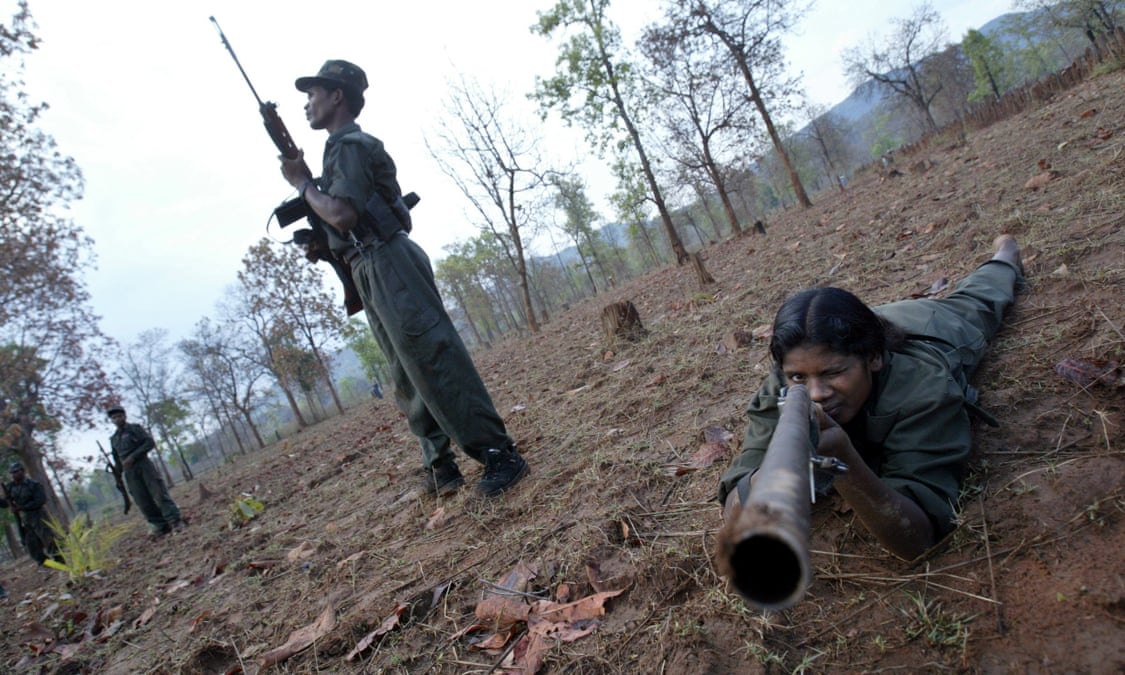- UID
- 20
- Online time
- Hours
- Posts
- Reg time
- 24-8-2017
- Last login
- 1-1-1970
|
An anthropologist’s nuanced account of life with India’s revolutionary movement, including her 250-km trek, disguised as a male soldier, with a rebel platoon

Maoist Naxalite revolutionaries exercise in the central Indian state of Chattisgarh … ‘Shah provides one the most nuanced, informed accounts yet of this strange and awful conflict.’ Photograph: Mustafa Quraishi/AP
▼ Between 2008 and 2010, the anthropologist Alpa Shah spent 18 months as a participant observer in India’s largely rural state of Jharkhand. She lived amongadivasis, tribal peoples outside the caste system who count among the communities most neglected by the government. Jharkhand is also one of the heartlands of India’s Maoist insurgency, a civil war that in 2006 the country’s prime minister identified as the “biggest internal security threat to the Indian state”. For decades, Indian politicians and commentators have argued about the country’s longstanding Maoist war: are insurgents ideological terrorists fixated on an outdated creed, or are they desperate rebels with a cause, forced to take up guns by state brutality? Dissatisfied by this polarised debate, Shah decided to immerse herself in the communities who live alongside the insurgents, to explore what the rebellion looks like from the grassroots.

Revolutionary insight … Alpa Shah. Photograph: Hurst Publishing
This was an exceptional undertaking. The geographic and cultural remoteness of these communities, together with the acute dangers of living in a warzone, mean few outsiders have based themselves there for longer than a few weeks. The lack of careful ethnographic investigation has permitted polemical views of the insurgency to dominate the Indian media. Even more remarkable is the fact that Shah spent her final week in Jharkhand’s forests disguised as a male guerrilla on a 150-mile (240km) trek with a Maoist platoon.Nightmarch– a report of her time with the Maoists andadivasicivilians they govern – provides one the most nuanced, informed accounts yet of this strange and awful conflict.
The civil war is in some ways a cold war anachronism. India’s contemporary Maoists trace their lineage to the Naxalite rebellionof the late 1960s, which was heavily influenced and encouraged by Mao’s Cultural Revolution. While that earlier conflagration was for the most part extinguished in the early 1970s by a harsh state response, splinters of the original movement fought on. In 2004, several of these fragments reunited within a new political and military organisation: the Communist Party of India (Maoist) and its People’s Liberation Guerrilla Army. (▪ ▪ ▪)
► Please, read the full note here: Source |
|